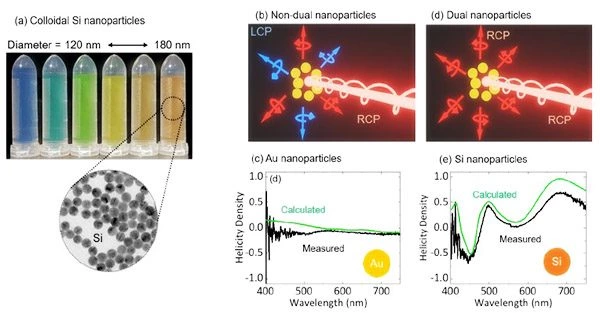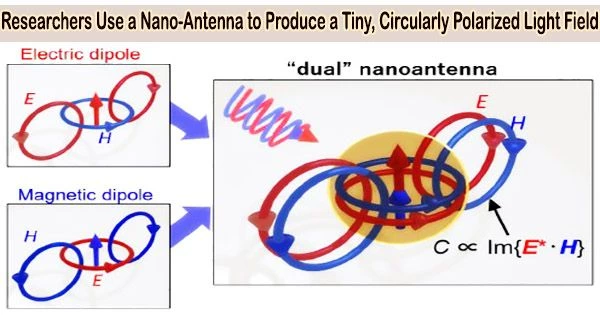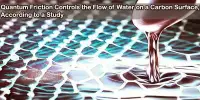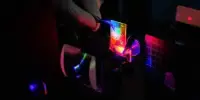A research team from Kobe University in Japan has created and tested a nano-antenna that uses the exact optical resonance of dielectric nanoparticles to produce a local field of circularly polarized light. This technique improves the chiral chemicals’ susceptibility to circularly polarized light.
The results of this work should be applicable to chirality studies and asymmetric photochemical reactions of biomolecules, chemicals, and medicines.
The quality of a substance that prevents it from being superimposed on its mirror image is known as “chirality.” In the domains of life science and medicine, there is a high demand for innovative technologies that can effectively recognize and sort mirror isomers since the physiological effects of the mirror image isomers of chiral compounds differ greatly.
Circular dichroism (the difference in optical absorption for left and right circularly polarized light) in chiral molecules can be used to trigger photochemical reactions and detection methods, but analysis using these methods requires large sample concentrations and prolonged measurement times.
Due to the small size of chiral molecules in comparison to the helical pitch of such light, these requirements result from the negligible absorption differential between left and right circularly polarized light.
A method that generates increased fields with circular polarization in nanoscale regions smaller than optical wavelengths is needed to increase circular dichroism. When both the electric and magnetic fields are strengthened and the direction of handedness of the incident circular polarization (helicity) is conserved, optical chirality, a measurement of the augmented field of circular polarization, is maximized.
However, conventional nano-antennas (e.g., metal nano-antennas with localized surface plasmon resonance) resonate with the incident electric field, but their response to the incident magnetic field is minimal, blocking helicity preservation. Therefore, it is essential to create a brand-new kind of nano-antenna that resonates in both electric and magnetic fields.
This study, published in Nano Letters, focused on the Mie resonance of dielectric nanoparticles with a high refractive index. Mie resonances include electric and magnetic dipole resonances, and dielectric nanoparticles with low-order Mie resonances in light frequency ranges can enhance both incident electric and magnetic fields. Such nanoparticles are electromagnetically symmetric and termed “dual” nano-antennas.
Dual nano-antennas, despite having an achiral shape, improve optical chirality with their two resonances. In this case, the scattered light from the resonance preserves the incident light’s helicity (handedness of circular polarization).
Using Mie resonances in the visible and near-infrared spectrums, the research team created a novel kind of nano-antenna that can both increase electromagnetic fields and preserve circular polarization.
First, the researchers calculated the helicity density of optical resonance in silicon nanoparticles based on the Mie theory. They showed that under Kerker circumstances, these particles maintain the helicity of incident circularly polarized light while maintaining the same intensity and phase in the electric and magnetic dipole resonances that generate a nearby field of circularly polarized light.
The study team employed a colloidal solution of independently created crystalline silicon nanoparticles to demonstrate this capability. Figure 2(a) shows a photograph of colloidal solutions of differently sized silicon nanoparticles. Suppressing the size distribution to less than 5% results in vivid scattering coloration.

(a) Photographs of colloidal Si nanoparticles in water with different diameters. (b, d) Schematics of scattering of circularly polarized light in “non-dual” (b) and “dual” (d) nanoparticles. (c, e) Calculated and measured helicity density spectra of Au (c) and Si (e) nanoparticles.
When the nanoparticles are exposed to clockwise circularly polarized light, the researchers created a setup to precisely quantify the right and left-handed circularly polarized components of the dispersed light in order to acquire the helicity density spectrum.
Particles without this “dual” resonance (e.g., gold nanoparticles) exhibit changes in the scattered light polarization, as shown in Figure 2(b), and do not preserve the incident light helicity.
The helicity density is nearly zero in both experiments and calculations, as shown in Figure 2(c). While this is happening, “dual” nanoparticles meeting the Kerker criteria maintain the helicity of the dispersed light from the incident circularly polarized light (Figure 2(d)).
At a wavelength of about 680 nm, the colloidal solution of silicon nanoparticles in Figure 2(e) enables the helicity density to attain a theoretical value of 0.96 and an experimental value of 0.7.
This outcome suggests that a circularly polarized near field has formed on the nanoparticle surface. The study team has shown that helicity conservation of incident circularly polarized light is attainable in wavelengths of 550 to 750 nm by carrying out identical tests on silicon nanoparticles with average diameters ranging from 114 to 179 nm.
Circularly polarized light fields that are close by improve the interaction of light with chiral compounds. With potential uses in the pharmaceutical industry, this effect enhances the circular dichroism of chiral compounds, enabling highly sensitive detection and analysis as well as boosting the effectiveness of asymmetric photochemical reactions. The created nanoparticle solution also holds promise as a novel liquid for polarization control of light.















